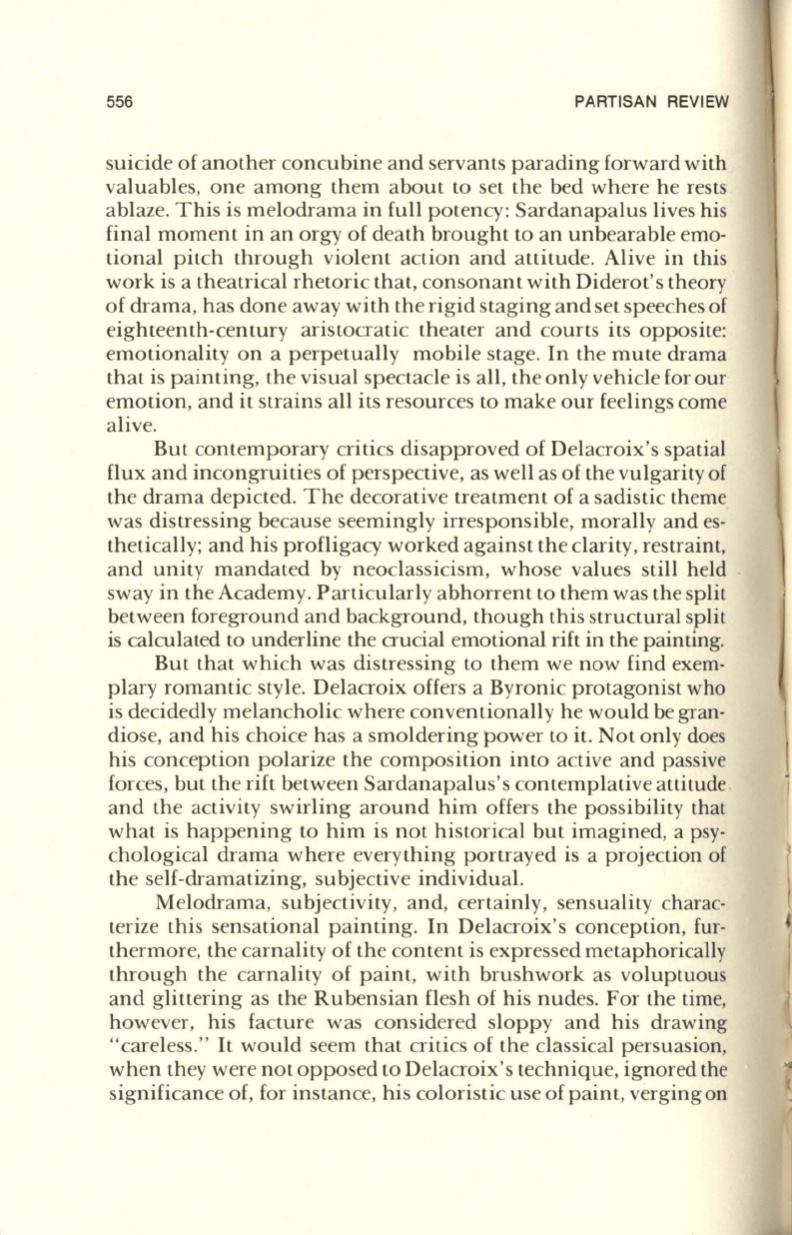
556
PARTISAN REVIEW
suicide of another concubine and servants parading forward with
valuables, one among them about to set the bed where he rests
ablaze. This is melodrama in full potency: Sardanapalus lives his
final moment in an orgy of death brought to an unbearable emo–
tional pitch through violent action and attitude. Alive in this
work is a theatrical rhetoric that, consonant with Diderot's theory
of drama, has done away with the rigid staging and set speeches of
eighteenth-century aristocratic theater and courts its opposite:
emotionality on a perpetually mobile st.age. In the mute drama
that is painting, the visual spectacle is all, the only vehicle for our
emotion, and it strains all its resources to make our feelings come
alive.
But contemporary critics disapproved of Delacroix's spatial
flux and incongruities of perspective, as well as of the vulgarity of
the drama depicted. The decorative treatment of a sadistic theme
was distressing because seemingly irresponsible, morally and es–
thetically; and his profligacy worked against the clarity, restraint,
and unity mandated by neoclassicism, whose values still held
sway in the Academy. Particularly abhorrent to them was the split
between foreground and background, though this structural split
is calculated to underline the crucial emotional rift in the painting.
But that which was distressing to them we now find exem–
plary romantic style. Delacroix offers a Byronic protagonist who
is decidedly melancholic where conventionally he would be gran–
diose, and his choice has a smoldering power to it. Not only does
his conception polarize the composition into active and passive
forces, but the rift between Sardanapalus's contemplative attitude
and the activity swirling around him offers the possibility that
what is happening to him is not historical but imagined, a psy–
chological drama where everything portrayed is a projection of
the self-dramatizing, subjective individual.
Melodrama, subjectivity, and, certainly, sensuality charac–
terize this sensational painting. In Delacroix's conception, fur–
thermore, the carnality of the content is expressed metaphorically
through the carnality of paint, with brushwork as voluptuous
and glittering as the Rubensian flesh of his nudes. For the time,
however, his facture was considered sloppy and his drawing
"careless." It would seem that critics of the classical persuasion,
when they were not opposed
to
Delacroix's technique, ignored the
significance of, for instance, his coloristic use of paint, verging on


